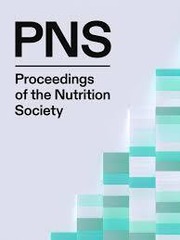Protein glycation is central to tissue damage occurring as part of the pathogenic process of several non-communicable diseases(Reference Sabanayagam, Liew and Tai1, Reference Yan, Ramasamy and Naka2). There is a limited body of work on the antiglycative function of (poly)phenols, relying on supra-physiological concentrations and use of non-bioavailable compounds(Reference Xie and Chen3, Reference Hou, Chung and Chen4). To inform the design of a physiologically relevant in-vitro study, a systematic literature review of dietary interventions quantifying plasma phenolic acids was carried out, to inform selection of physiologically relevant concentrations. Bovine Serum Albumin (BSA), either native (no treatment), pre-oxidised (incubated with 10nM H2O2, 22 for 8 hours) or incubated with a phenolic acid mixture, for 8 hours) was glycated. Glycation was carried out with i) glucose only (0, 5, or 10 mM), ii) glucose (0, 5, or 10 mM) plus H2O2 (10 nM), or iii) glucose (0, 5, or 10 mM) plus phenolic acids (10–160 nM). Fructosamine was measured using the nitroblue tetrazolium method. Following (high) dietary polyphenol intake, 3-hydroxyphenylacetic acid is the most abundant phenolic acid in peripheral blood (up to 338 μM) with concentrations for other phenolic acids ranging from 13 nM–200 μM. Presence of six phenolic acids with BSA during in-vitro glycation did not lower fructosamine formation. However, when BSA was pre-incubated with phenolic acids, significantly lower concentration of fructosamine was detected under glycoxidative conditions (glucose 5 or 10 mM plus H2O2 10 nM) (p < 0·001 vs. native BSA). Protein pre-treatment, either with oxidants or phenolic acids, is an important regulator of subsequent glycation in a physiologically relevant system. High quality in-vitro studies under conditions closer to physiology are feasible and should be employed by default.

Fig. 1. Fructosamine concentration (mM DMF equivalent) after two weeks incubation in the presence of glucose and H2O2 (10nM) for native, pre-oxidised and phenolic-preincubated BSA. Two-way ANOVA analysis showed a significant effect of phenolic-preincubation inhibitin glycation. *p < 0·05


